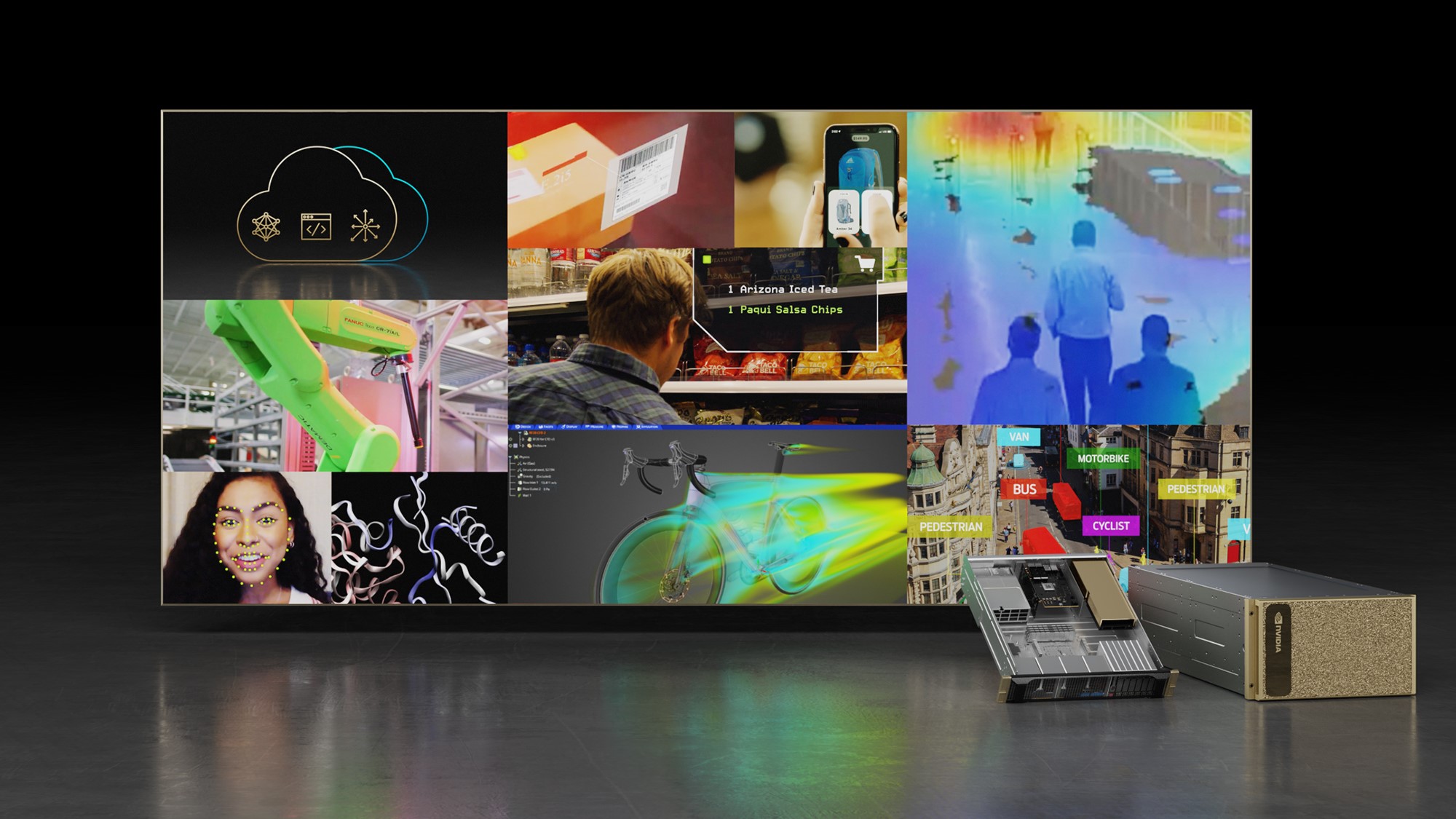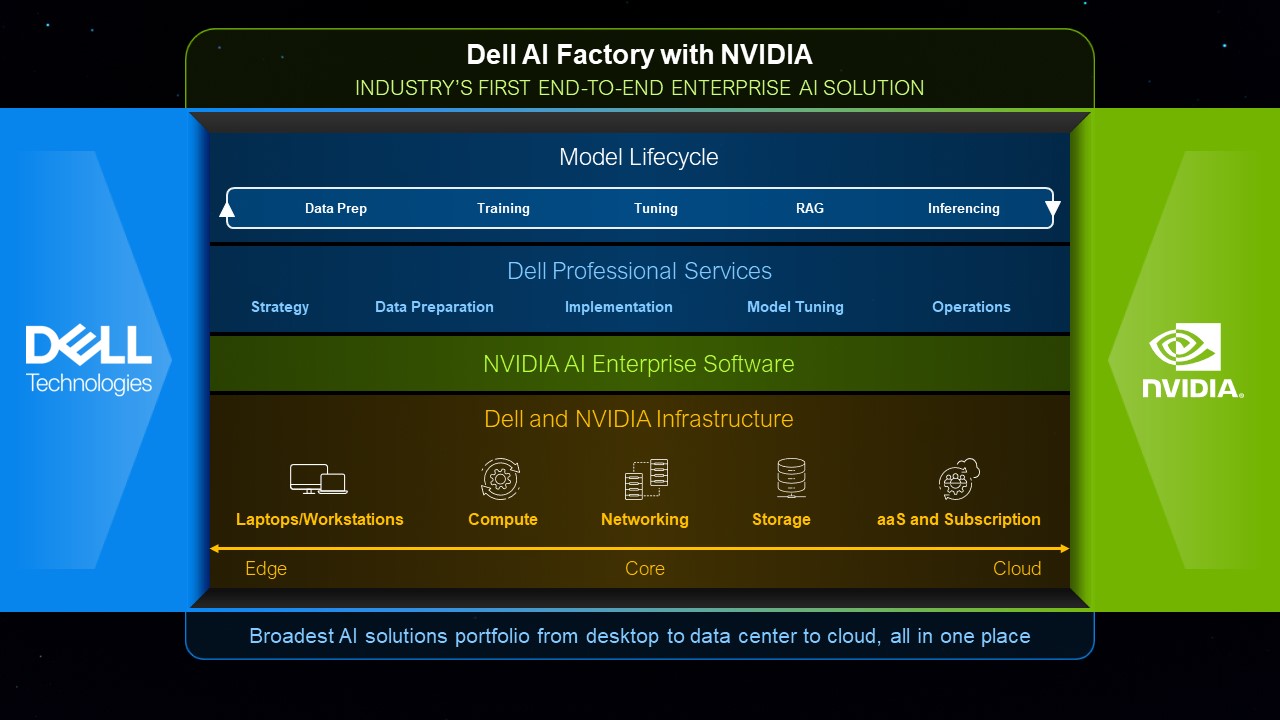
Introduction
With great pleasure, we will explore the intriguing topic related to Nvidia: The AI and Gaming Solution for Every Need. Let’s weave interesting information and offer fresh perspectives to the readers.
Table of Content
- 1 Introduction
- 2 The Green Giant’s Reign: Nvidia’s Dominance
- 2.1 From Gaming to AI: A Synergistic Partnership
- 2.1.1 The Rise of CUDA and its Impact
- 2.1.1.1 Nvidia’s Deep Learning Super Sampling (DLSS): A Gaming Revolution
- 2.1.1.1.1 Improving Visual Fidelity and Performance
- 2.1.1.1.2 The Science Behind DLSS
- 2.1.1.2 Nvidia’s Impact on AI Research
- 2.1.2 Nvidia’s Ecosystem: More Than Just Hardware
- 2.2 Nvidia’s Future: The Metaverse and Beyond
- 2.2.3 Addressing Concerns: Power Consumption and Costs
- 2.2.4 The Competitive Landscape: Staying Ahead of the Curve
- 3 Conclusion
- 4 FAQs
- 5 Closure
Nvidia: The AI and Gaming Solution for Every Need
The Green Giant’s Reign: Nvidia’s Dominance
Nvidia. The name itself conjures images of powerful graphics cards, breathtaking gaming visuals, and cutting-edge AI technology. But what exactly makes Nvidia such a behemoth in the tech world? It’s not just about raw processing power; it’s about a strategic vision that seamlessly blends the worlds of gaming and artificial intelligence, creating a synergistic ecosystem that benefits both consumers and businesses. Think of it like this: Nvidia isn’t just building components; they’re constructing the very foundation upon which the future of computing will be built. We’re talking about a company that has not only mastered its core competency but has also anticipated and shaped the future trends, making it a key player in everything from self-driving cars to medical imaging. Remember those clunky, low-resolution games of the past? Nvidia’s relentless innovation has driven the evolution of gaming graphics, making today’s immersive experiences possible. And now, that same innovative spirit is powering the AI revolution, transforming industries and shaping the future in ways we’re only beginning to understand. This isn’t just about technological advancement; it’s about a fundamental shift in how we interact with technology, a shift that Nvidia is leading.
From Gaming to AI: A Synergistic Partnership
Initially known for its high-performance graphics processing units (GPUs), primarily used in gaming, Nvidia’s journey into the AI realm wasn’t a sudden pivot; it was a natural evolution. The parallel processing capabilities of GPUs, initially designed to render complex 3D graphics, turned out to be incredibly well-suited for the computationally intensive tasks required in machine learning. This realization led to the development of specialized GPU architectures optimized for AI, creating a virtuous cycle: advancements in gaming technology fueled AI breakthroughs, and vice-versa. Consider the development of deep learning algorithms – the very same techniques used to power sophisticated AI models are also behind the photorealistic graphics we enjoy in modern games. It’s a beautiful example of cross-pollination in technology, where progress in one area directly benefits another. This symbiotic relationship is a core reason for Nvidia’s success. It’s not just about having the best technology; it’s about having the right technology at the right time, and understanding how different technologies can work together to achieve something greater than the sum of their parts. This synergistic approach has allowed Nvidia to not only dominate its existing markets but also to expand into entirely new ones, positioning it for continued growth and influence in the years to come.
The Rise of CUDA and its Impact
Nvidia’s CUDA (Compute Unified Device Architecture) platform played a pivotal role in this transformation. CUDA allows developers to harness the power of Nvidia GPUs for general-purpose computing, extending their capabilities far beyond gaming. This opened up a world of possibilities for researchers and developers in various fields, from scientific computing to AI research. Before CUDA, utilizing the power of GPUs for tasks beyond graphics rendering was a complex and often impractical undertaking. CUDA simplified this process dramatically, making it accessible to a much wider range of users and fostering a vibrant ecosystem of developers building innovative applications. Think of it as unlocking a hidden potential – the raw power of the GPU was always there, but CUDA provided the key to accessing and utilizing it effectively. This democratization of GPU computing was a crucial step in Nvidia’s rise to dominance in the AI space, making its technology accessible to researchers and companies who might not have otherwise had the resources or expertise to leverage such powerful hardware. The impact of CUDA cannot be overstated; it is a testament to Nvidia’s foresight and commitment to building an open and accessible platform that fosters innovation.
Nvidia’s Deep Learning Super Sampling (DLSS): A Gaming Revolution
Improving Visual Fidelity and Performance
DLSS is a prime example of Nvidia’s commitment to pushing the boundaries of both gaming and AI. This revolutionary technology uses AI to upscale lower-resolution images to higher resolutions, resulting in stunning visuals with minimal performance impact. Imagine trying to render a game at 4K resolution – it’s incredibly demanding on your hardware. DLSS, however, intelligently reconstructs the image using AI, allowing you to enjoy 4K visuals even on hardware that might not be capable of natively rendering at that resolution. This is a significant achievement, allowing gamers to experience higher fidelity graphics without sacrificing frame rates. It’s a perfect marriage of gaming technology and AI prowess, showcasing Nvidia’s ability to leverage its expertise across multiple domains. The impact of DLSS is profound, making high-resolution gaming more accessible to a wider range of players and raising the bar for visual quality in the gaming industry. It’s a clear demonstration of how AI can enhance the gaming experience in significant ways, and a testament to Nvidia’s ongoing commitment to innovation.
The Science Behind DLSS
The magic behind DLSS lies in its deep learning models, trained on massive datasets of images and game scenes. These models learn to predict the details of a higher-resolution image based on a lower-resolution input, effectively filling in the missing information. This is a complex process requiring immense computational power, a testament to the capabilities of Nvidia’s GPUs. The training process itself is a feat of engineering, involving sophisticated algorithms and massive datasets. The result, however, is a technology that significantly improves the gaming experience, allowing players to enjoy higher visual fidelity without compromising performance. This is a prime example of how AI is transforming the gaming industry, and Nvidia is at the forefront of this revolution. The ongoing development and refinement of DLSS demonstrate Nvidia’s commitment to continuous improvement and its understanding of the power of AI in shaping the future of gaming.
Nvidia’s Impact on AI Research
Beyond gaming, Nvidia’s GPUs have become indispensable tools for AI researchers worldwide. Their powerful parallel processing capabilities are crucial for training complex deep learning models, which require massive amounts of computation. Many groundbreaking advancements in AI, from image recognition to natural language processing, have been made possible by the computational power provided by Nvidia’s hardware. Think of it as providing the engine for the AI revolution – without the raw processing power of Nvidia’s GPUs, many of the AI breakthroughs we see today would simply not be possible. This highlights the crucial role Nvidia plays in driving innovation in the AI field, providing the essential infrastructure that allows researchers to push the boundaries of what’s possible. The company’s contribution to the field goes beyond just hardware; Nvidia also actively supports the AI research community through software tools, libraries, and collaborations, furthering the development and adoption of AI technologies across various industries.
Nvidia’s Ecosystem: More Than Just Hardware
Nvidia’s success isn’t solely attributable to its hardware; it’s also a testament to its carefully cultivated ecosystem. The company provides a comprehensive suite of software tools, libraries, and platforms that support developers building AI and gaming applications. This ecosystem fosters collaboration and innovation, making it easier for developers to create and deploy applications that leverage Nvidia’s technology. Think of it as a complete package – not just the engine, but also the chassis, the tires, and the fuel. This holistic approach makes it significantly easier for developers to integrate Nvidia’s technology into their projects, accelerating the development cycle and fostering a more vibrant community of users. This comprehensive ecosystem is a key differentiator, making Nvidia’s technology more accessible and attractive to a wider range of developers and businesses. The company’s commitment to building a robust and supportive ecosystem is a significant factor in its continued success and dominance in the industry.

Nvidia’s Future: The Metaverse and Beyond
Nvidia’s vision extends far beyond gaming and current AI applications. The company is heavily invested in the development of metaverse technologies, recognizing the potential for immersive and interactive experiences. Their GPUs are already playing a crucial role in rendering the complex 3D environments required for metaverse applications, and their AI technology is being used to create more realistic and engaging virtual worlds. Imagine a future where virtual and augmented reality seamlessly blend with our physical world, creating entirely new possibilities for interaction and communication. Nvidia is positioning itself to be a key player in this future, leveraging its expertise in both graphics and AI to shape the development of the metaverse. This forward-thinking approach demonstrates Nvidia’s commitment to innovation and its ability to anticipate and adapt to emerging technological trends. The company’s investment in the metaverse is not just a strategic move; it’s a reflection of their broader vision for the future of computing and human interaction.
Addressing Concerns: Power Consumption and Costs
While Nvidia’s technology is undeniably powerful, it’s important to acknowledge potential drawbacks. High-end GPUs, particularly those optimized for AI, can consume significant amounts of power, raising concerns about energy efficiency and environmental impact. The cost of these GPUs can also be prohibitive for many individuals and smaller businesses. Nvidia is actively working to address these concerns through innovations in power efficiency and the development of more affordable options. However, it’s crucial to acknowledge that these are ongoing challenges that require continued attention and innovation. The balance between performance and efficiency is a constant challenge in the technology industry, and Nvidia is actively engaged in finding solutions that minimize environmental impact while maintaining high performance. This ongoing commitment to addressing these concerns is vital for the long-term sustainability and accessibility of Nvidia’s technology.
The Competitive Landscape: Staying Ahead of the Curve
Nvidia faces stiff competition from other technology companies vying for a share of the gaming and AI markets. AMD, Intel, and other players are constantly innovating and developing their own products and technologies. To maintain its leading position, Nvidia must continue to push the boundaries of innovation, delivering cutting-edge technology that stays ahead of the curve. The competitive landscape is dynamic and demanding, requiring Nvidia to constantly adapt and evolve to stay ahead of the competition. This requires significant investment in research and development, as well as a commitment to delivering high-quality products and services that meet the evolving needs of its customers. The company’s success hinges on its ability to anticipate market trends, respond to competitive pressures, and consistently deliver innovative solutions that meet the ever-changing demands of the industry.
Conclusion
Nvidia’s journey from a gaming graphics card manufacturer to a leader in the AI revolution is a remarkable testament to innovation, foresight, and a commitment to building a robust and interconnected ecosystem. Their technology is transforming industries, empowering researchers, and enriching the lives of millions of gamers worldwide. However, the challenges of power consumption and cost, along with intense competition, require ongoing attention and innovation. The future of computing, and perhaps even the metaverse itself, is deeply intertwined with Nvidia’s continued success. Their ability to navigate these challenges and continue pushing the boundaries of what’s possible will determine their continued dominance in the years to come. Their story serves as an inspiring example of how a company can not only master its core competency but also successfully expand into new and emerging markets, shaping the technological landscape in profound ways.
The future holds immense potential for Nvidia, and its role in shaping the technological landscape will only grow more significant. As AI continues to evolve and the metaverse takes shape, Nvidia’s position as a key player will likely solidify, driven by its commitment to innovation, its robust ecosystem, and its ability to anticipate and adapt to emerging trends. The company’s success story serves as a powerful case study in strategic vision, technological mastery, and the power of synergistic innovation.
FAQs
- What is CUDA and why is it important? CUDA is Nvidia’s parallel computing platform that allows developers to harness the power of Nvidia GPUs for general-purpose computing, making GPU computing accessible for a wide range of applications, including AI.
- How does DLSS improve gaming performance? DLSS uses AI to upscale lower-resolution images to higher resolutions, resulting in stunning visuals with minimal performance impact, allowing gamers to enjoy higher fidelity graphics without sacrificing frame rates.
- What are the environmental concerns related to Nvidia’s GPUs? High-end Nvidia GPUs can consume significant amounts of power, raising concerns about energy efficiency and environmental impact. Nvidia is actively working on solutions to improve power efficiency.
- Who are Nvidia’s main competitors? Nvidia’s main competitors include AMD and Intel, both vying for a share of the gaming and AI markets.
- What is Nvidia’s role in the metaverse? Nvidia’s GPUs and AI technologies are crucial for rendering the complex 3D environments and creating realistic experiences required for metaverse applications.

Closure
In conclusion, we hope this article has provided valuable insights into Nvidia: The AI and Gaming Solution for Every Need. We hope you find this article informative and beneficial. See you in our next article!